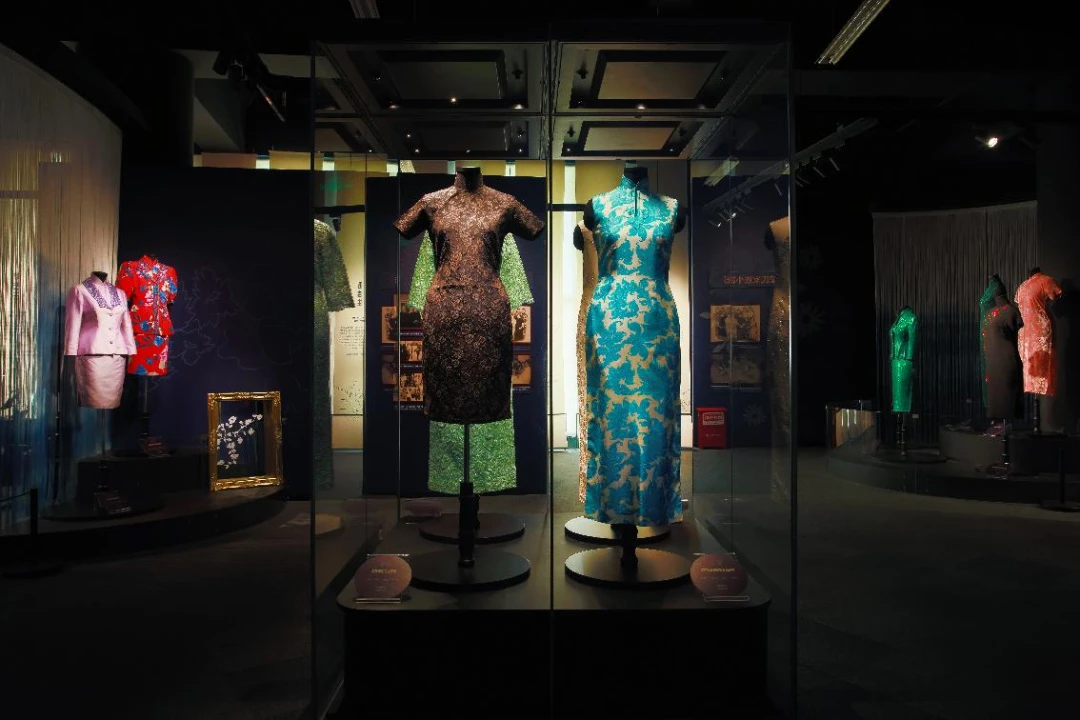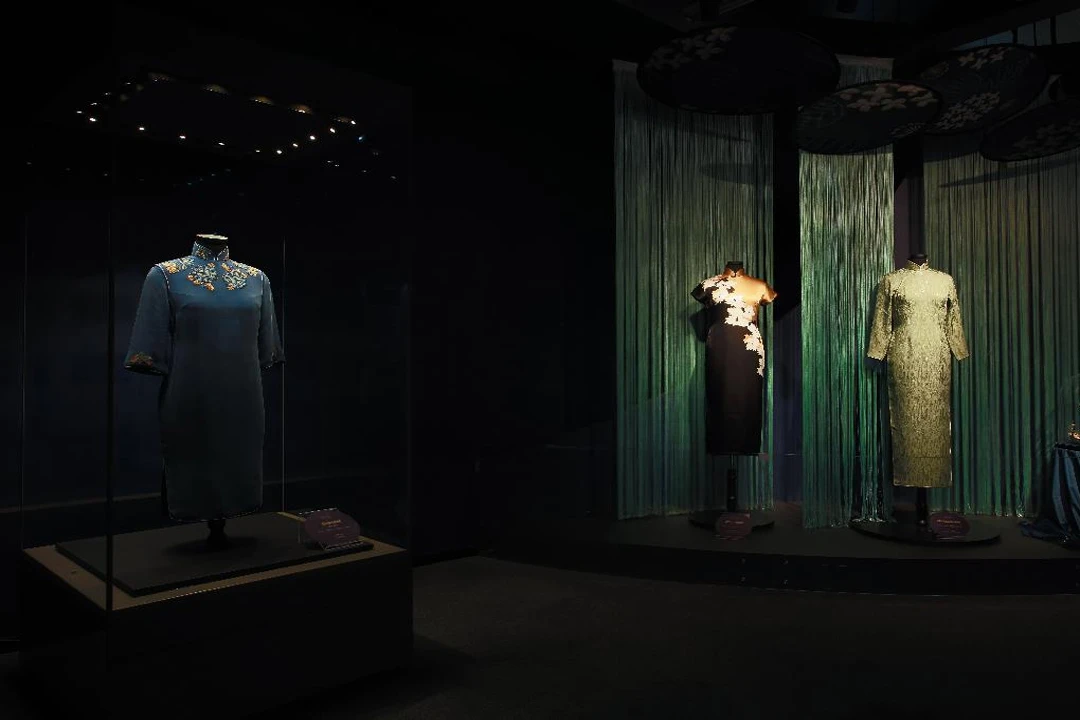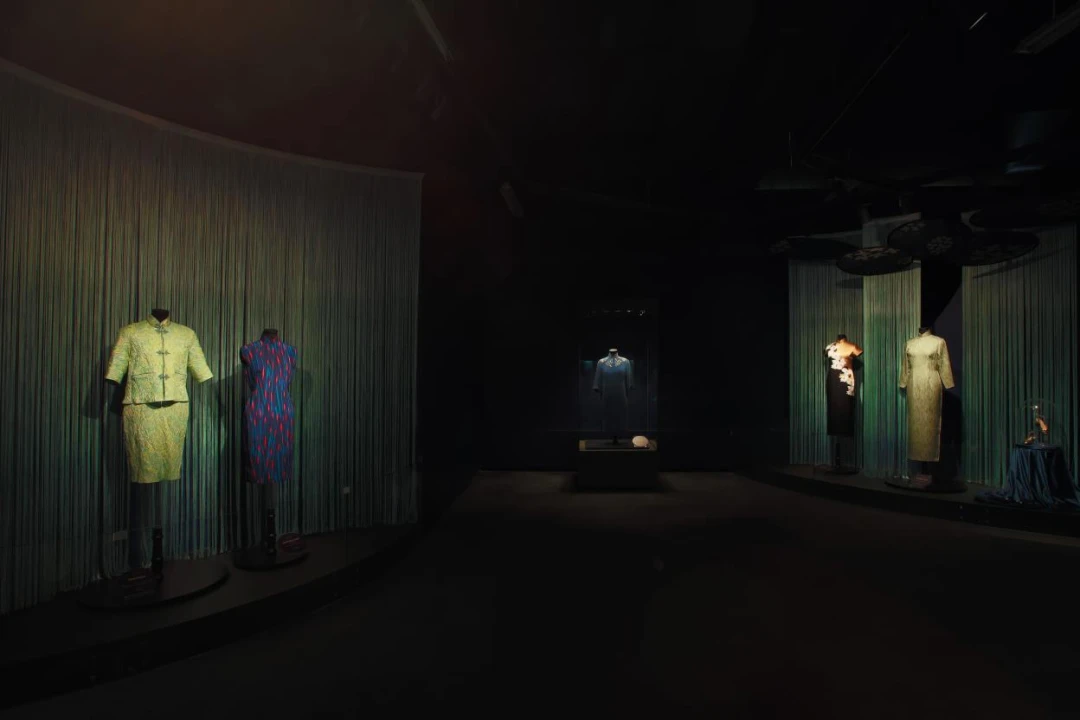The Shanghai University Museum has recently received a generous donation of 100 exquisite qipaos from the Shanghai Old Qipao Treasure House. This remarkable collection includes garments once worn by prominent figures such as Sheng Fanyi, Peng Juying, and Sheng Guanyun, descendants of the influential Sheng Xuanhuai family; Xia Luya and Xia Lumin, daughters of Xia Ruifang; Zhao Sixiaojie, wife of Zhang Xueliang; Wang Yingxia, wife of Yu Dafu; Zhang Youyi, wife of Xu Zhimo; Jiang Shiyun, wife of Bei Zuyi; Yang Xuexin, wife of Dong Yinchu; and renowned actresses Xia Meng and Li Lihua.
Additionally, in May, six qipaos belonging to Liu Huixiu, wife of Rong Zongjing, were added to the museum’s collection, further enriching the Shanghai University Museum’s distinctive collection of Haipai qipaos.In accordance with the principle of regular maintenance for textile exhibits and the preliminary organization of the newly acquired qipaos, the Shanghai University Museum has recently upgraded its second-floor qipao exhibition hall.
The updated exhibition features a total of 27 pieces, including three first-class cultural relics and 11 newly collected qipaos. The first and second sections of the exhibition primarily showcase qipaos worn by female relatives of the Rong Zongjing and Rong Desheng families, while the third section focuses on displaying the newly acquired qipaos, highlighting various styles and designs.
This exhibition brings together the exquisite qipaos of three generations of women from the Rong family, as well as those of prominent Jiangnan families and Shanghai socialites. The new display format allows mothers and daughters to be reunited and sisters to gather once more. Each exhibit is accompanied by a QR code providing additional information, along with photographs of the qipao owners and images of the qipaos being worn, offering a deeper insight into the stories behind these garments. Visitors are welcome to come and experience the inheritance and development, tradition, and fashion of Haipai qipaos.
The qipao, also known as cheongsam, is a quintessential symbol of Chinese fashion and culture. Originating from the traditional Manchu dress, the qipao underwent a significant transformation in Shanghai during the 1920s and 1930s, evolving into a more form-fitting and stylish garment that blended traditional Chinese elements with Western influences. The Haipai qipao, in particular, became a hallmark of Shanghai’s fashion scene, embodying the city’s cosmopolitan spirit and the elegance of its women.
The Shanghai University Museum’s qipao collection serves as a testament to the enduring legacy of this iconic garment and the women who wore them. The newly acquired qipaos, once belonging to the wives and daughters of prominent families and celebrities, offer a glimpse into the lives and styles of Shanghai’s elite during the early to mid-20th century. Each piece tells a unique story, reflecting the personal tastes, social status, and cultural background of its owner.
The exhibition’s thoughtful curation, which groups qipaos by family and showcases a diverse range of styles, allows visitors to appreciate the evolution of the qipao and its significance in Shanghai’s cultural history. By displaying qipaos worn by multiple generations of women from the same family, the exhibition highlights the passing down of this traditional garment and the enduring bonds between mothers, daughters, and sisters.
The inclusion of QR codes and photographs of the qipao owners and the garments being worn adds a personal touch to the exhibition, bringing the stories behind these qipaos to life. Visitors can gain a deeper understanding of the women who wore these exquisite pieces and the occasions for which they were worn, whether it be formal events, social gatherings, or daily life.
Moreover, the Shanghai University Museum’s commitment to the regular maintenance and preservation of these textile exhibits ensures that these precious pieces of history will be available for future generations to appreciate and study. The museum’s efforts to collect, conserve, and display these qipaos not only contribute to the preservation of Shanghai’s cultural heritage but also promote the understanding and appreciation of traditional Chinese fashion and craftsmanship.
The Shanghai University Museum’s qipao exhibition serves as an important platform for educating the public about the significance of this iconic garment and its role in shaping Shanghai’s cultural identity. By showcasing the qipaos of notable figures and families, the museum highlights the social and historical context in which these garments were worn, providing visitors with a deeper understanding of the city’s past and the lives of its inhabitants.
The exhibition also serves as a celebration of the artistry and craftsmanship behind the creation of these stunning pieces. Each qipao on display is a testament to the skill and dedication of the tailors and seamstresses who worked tirelessly to create these garments, often incorporating intricate embroidery, delicate lace, and luxurious fabrics. Visitors can marvel at the attention to detail and the exquisite workmanship that went into each piece, gaining a newfound appreciation for the art of traditional Chinese dressmaking.
In addition to its historical and artistic value, the qipao exhibition at the Shanghai University Museum also has contemporary relevance. In recent years, there has been a resurgence of interest in traditional Chinese fashion, with many designers and fashion enthusiasts looking to the past for inspiration. The qipaos on display at the museum serve as a valuable resource for those seeking to understand the origins and evolution of this iconic garment, as well as its potential for modern reinterpretation.
The museum’s efforts to collect and display these qipaos also contribute to the ongoing dialogue about cultural heritage preservation and the importance of protecting and promoting traditional arts and crafts. By providing a platform for these garments to be appreciated and studied, the Shanghai University Museum is helping to ensure that the legacy of the qipao and the skills and knowledge associated with its creation are passed down to future generations.
Furthermore, the qipao exhibition serves as a reminder of the importance of cultural exchange and the role that fashion can play in bridging cultures and fostering understanding. The Haipai qipao, with its blend of Chinese and Western elements, is a testament to Shanghai’s history as a cosmopolitan city and a hub of international trade and cultural exchange. By showcasing these garments and the stories behind them, the museum encourages visitors to reflect on the ways in which fashion can serve as a means of cultural expression and a vehicle for cross-cultural dialogue.
In conclusion, by providing a platform for these exquisite garments to be appreciated and studied, the museum is helping to ensure that the legacy of the qipao and the stories of the women who wore them are not forgotten. The exhibition serves as a celebration of the artistry, craftsmanship, and cultural significance of this iconic garment, as well as a reminder of the importance of preserving and promoting traditional arts and crafts. Through its efforts, the Shanghai University Museum is not only enriching its own collection but also contributing to the ongoing dialogue about the role of fashion in shaping cultural identity and fostering cross-cultural understanding.



